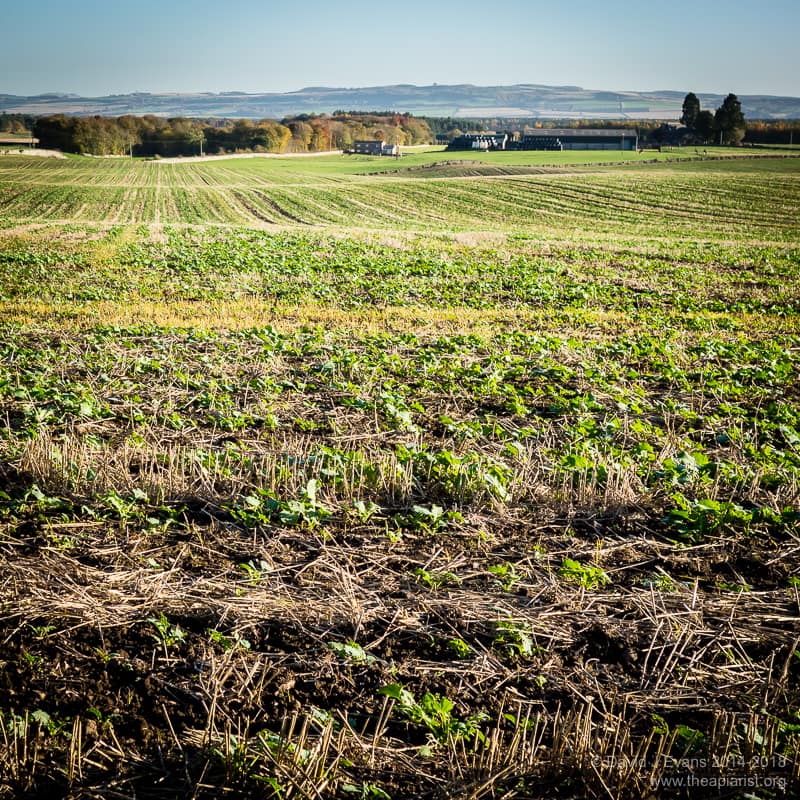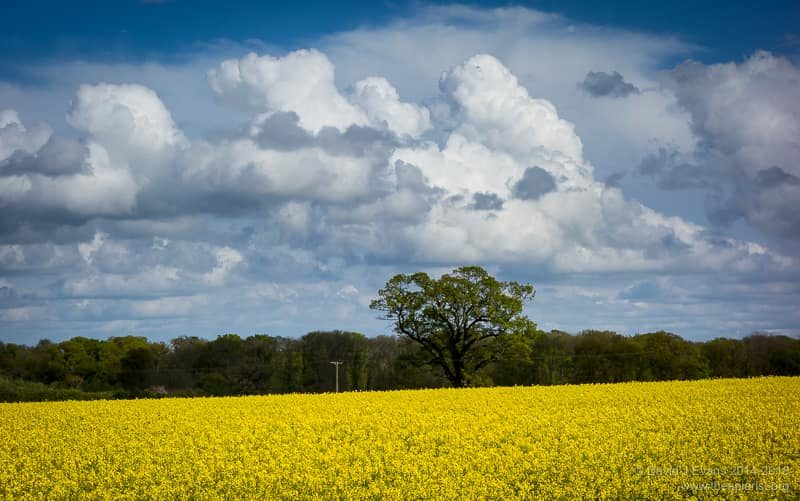Future promise

Winter-sown OSR …
With the days getting shorter, the weather worsening and the bees hunkering down until the spring there’s little to do in the apiary. The warm weather, weekly inspections, swarm collection and queen rearing are months away … and it feels like it ? However, things are already happening in the fields that hint at the season to come. The winter-sown oil seed rape (OSR) has been through for at least a month and is now 4-6″ tall. There’s a field just outside the village with acres of the stuff and it will be good to watch it develop into a sea of yellow next spring.
I have a few colonies well within range of this field, as do at least a couple of other beekeepers. Using a Google Maps Area Tool I measured the field at about 17 hectares. Although primarily self-pollinated there’s evidence that the yield and quality (i.e. the percentage that germinates) of OSR seed or its oil content, are all increased if honeybees are present at a density of about 2 colonies per hectare. So, ample to go round for the colonies I’m aware of in the immediate vicinity. Furthermore, if colonies are located close to the OSR field boundaries, honeybees forage for a considerable distance across the field – certainly hundreds of metres. This is in contrast to wild pollinators – like solitary bees and bumble bees – which tend to decline in density away from the field margins (see also this recent paper which reports the same thing; PDF). Whilst this is a compelling argument for wide, species-rich field margins and smaller fields, the reality of modern farming is unfortunately very different. However, the benefits of honeybees (and for honeybees) mean that it might be worth having a chat with the farmer and moving a few colonies onto the field.
OSR honey isn’t to everyones taste and it certainly involves more work for the beekeeper. It must be extracted soon after the supers are collected or it crystallises in the comb. In addition, unless it’s converted into soft-set or ‘creamed’ honey it will inevitably set rock-hard in the jar, resulting in many bent teaspoons. On a more positive note, the availability of large amounts of pollen and nectar relatively early in the season helps colonies build up strongly. With good weather it’s an ideal time to replace comb, getting the bees to use the OSR nectar to build brand new comb – perhaps on foundationless frames – free of diseases for the season ahead. A great way to start the year.
And finally, a reminder of what’s to come …

Early May 2015 OSR …
Join the discussion ...